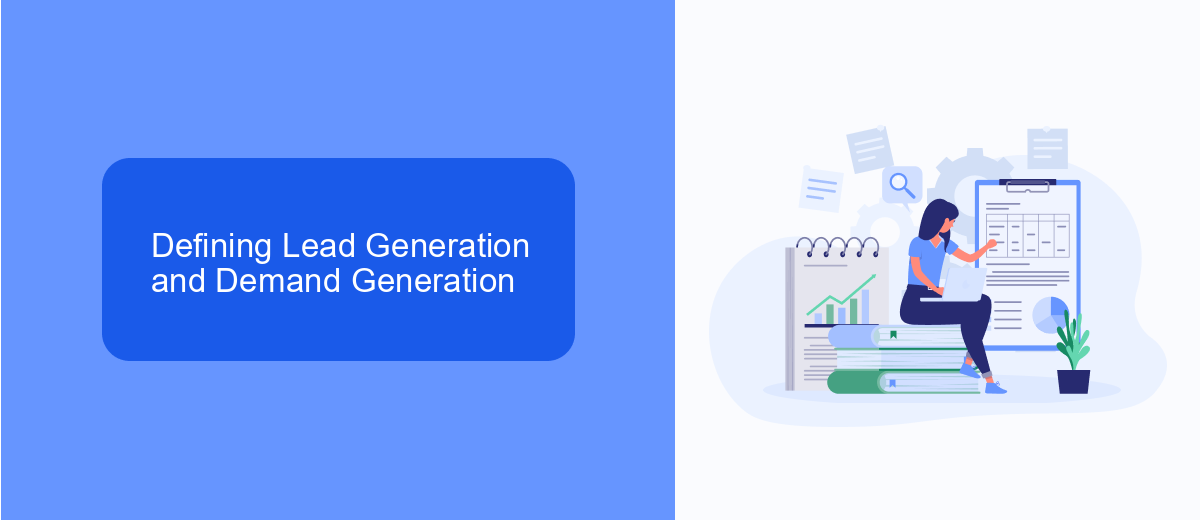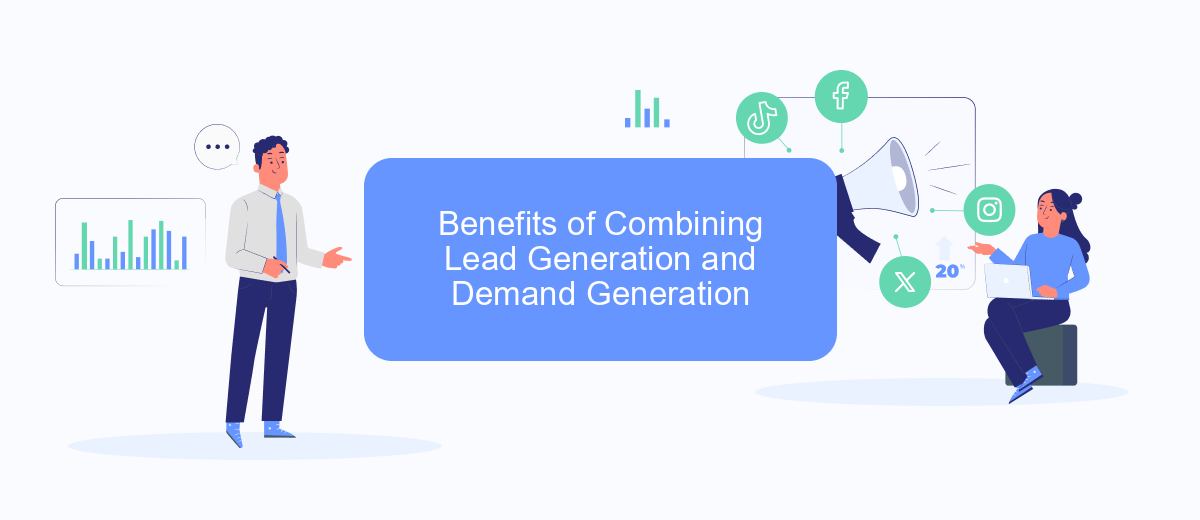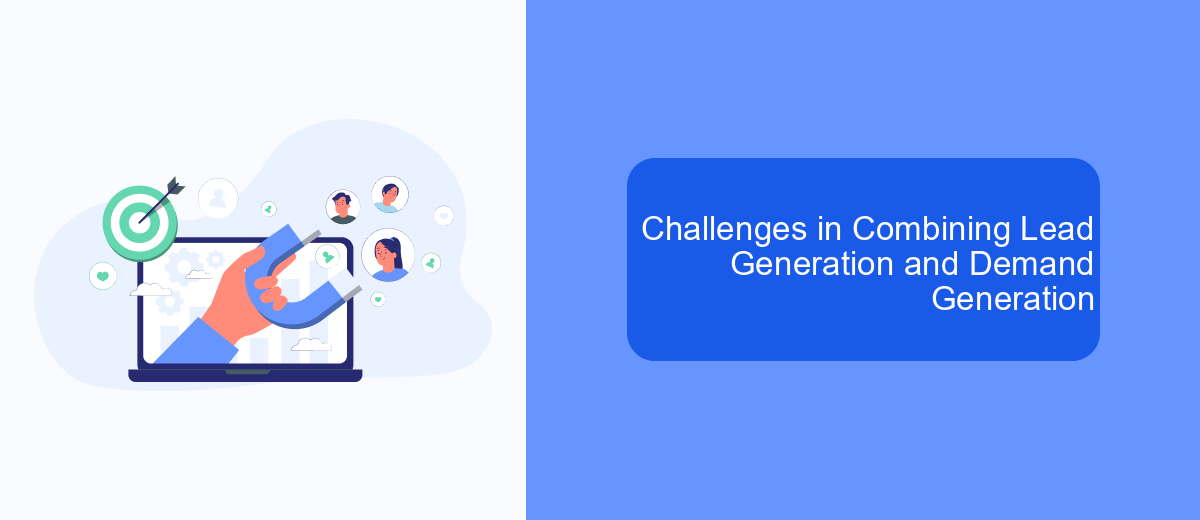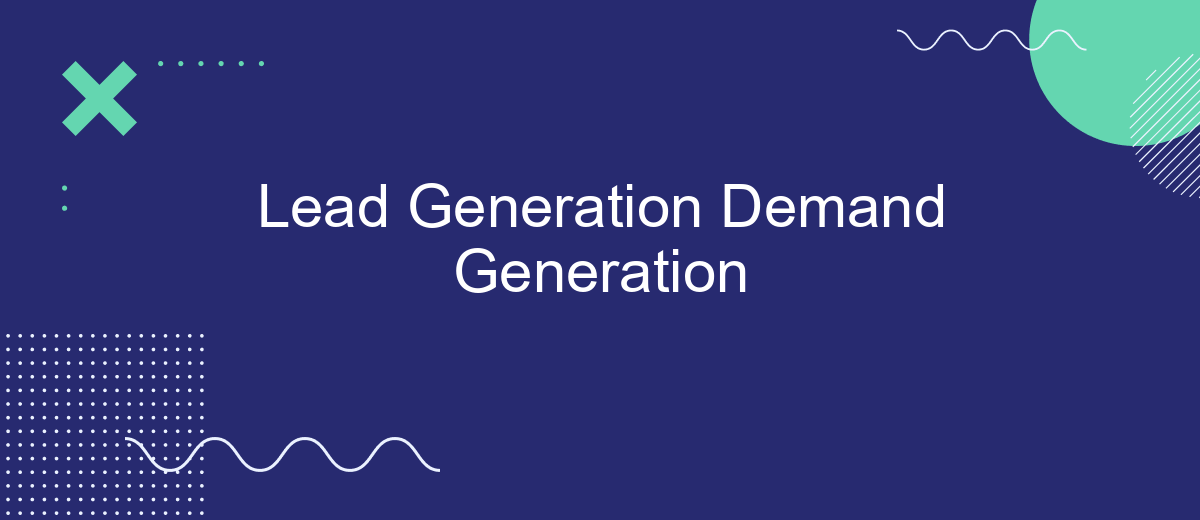Lead generation and demand generation are pivotal strategies in modern marketing, each serving unique roles in driving business growth. While lead generation focuses on capturing potential customers' contact information, demand generation aims to create awareness and interest in a company's products or services. Understanding the interplay between these two approaches can significantly enhance a company's marketing effectiveness and overall success.
Lead Generation and Demand Generation
Lead Generation and Demand Generation are crucial components of a successful marketing strategy. While demand generation focuses on creating awareness and interest in your products or services, lead generation aims to convert that interest into actionable leads. Both strategies are essential for driving business growth and require a well-coordinated approach.
- Lead Generation: Involves capturing and nurturing potential customers through various channels like email marketing, social media, and landing pages.
- Demand Generation: Focuses on building brand awareness and interest through content marketing, webinars, and public relations.
- Integration Tools: Services like SaveMyLeads facilitate seamless integration between different marketing platforms, ensuring that data flows smoothly and campaigns are more effective.
By leveraging both lead generation and demand generation strategies, businesses can create a robust pipeline of potential customers. Tools like SaveMyLeads can automate and streamline the process, making it easier to manage and optimize marketing efforts. Ultimately, a balanced approach to both strategies will result in higher conversion rates and sustained business growth.
Defining Lead Generation and Demand Generation

Lead generation and demand generation are two critical components of a successful marketing strategy, but they serve different purposes. Lead generation focuses on identifying and capturing potential customers' contact information, usually through forms, landing pages, or sign-ups. This process aims to convert visitors into leads that can be nurtured and eventually turned into paying customers. Techniques like email marketing, social media campaigns, and content marketing are often used to attract and engage prospects.
On the other hand, demand generation is a broader, more holistic approach that aims to create awareness and interest in a company's products or services. It encompasses a wide range of marketing activities, including content creation, SEO, webinars, and events, to educate and inform potential customers. Tools like SaveMyLeads can streamline the integration of various marketing platforms, ensuring seamless data flow and more efficient lead nurturing. By combining both lead generation and demand generation strategies, businesses can build a robust pipeline of qualified leads and drive long-term growth.
Benefits of Combining Lead Generation and Demand Generation

Combining lead generation and demand generation strategies can significantly enhance your marketing efforts and drive better results. By integrating these approaches, businesses can create a more cohesive and efficient marketing funnel that nurtures prospects from awareness to conversion.
- Increased Efficiency: Aligning lead and demand generation can streamline processes, reducing redundancy and ensuring that marketing and sales teams are working towards common goals.
- Enhanced Targeting: Combining these strategies allows for more precise targeting, ensuring that marketing efforts reach the right audience at the right time, thus improving conversion rates.
- Improved ROI: A unified approach can lead to better resource allocation and higher return on investment, as efforts are focused on generating high-quality leads and nurturing them effectively.
- Better Analytics: Integrating lead and demand generation provides a more comprehensive view of marketing performance, enabling data-driven decisions and continuous optimization.
Services like SaveMyLeads can play a crucial role in this integration by automating lead capture and distribution processes. This allows businesses to seamlessly connect their marketing efforts with CRM systems, ensuring that no lead is lost and that follow-up actions are timely and relevant. By leveraging such tools, companies can maximize the benefits of combining lead generation and demand generation strategies.
Challenges in Combining Lead Generation and Demand Generation

Combining lead generation and demand generation can be a challenging endeavor for many businesses. While both strategies aim to drive growth, they often require different approaches and resources, making it difficult to align them seamlessly.
One of the primary challenges lies in balancing the short-term goals of lead generation with the long-term objectives of demand generation. Lead generation focuses on capturing immediate interest and converting prospects into leads, whereas demand generation aims to build awareness and interest over a longer period.
- Resource allocation: Ensuring that both strategies receive adequate funding and attention can be difficult.
- Data integration: Merging data from various sources to create a unified view of customer interactions is complex.
- Consistency in messaging: Maintaining a consistent brand message across both strategies is essential but challenging.
- Measuring success: Developing metrics that accurately reflect the performance of both strategies can be tricky.
Utilizing tools like SaveMyLeads can help alleviate some of these challenges by automating data integration and ensuring a seamless flow of information between your lead generation and demand generation efforts. This allows for a more cohesive strategy and better resource management.
- Automate the work with leads from the Facebook advertising account
- Empower with integrations and instant transfer of leads
- Don't spend money on developers or integrators
- Save time by automating routine tasks
Best Practices for Combining Lead Generation and Demand Generation
Combining lead generation and demand generation requires a strategic approach to maximize efficiency and results. Start by aligning your marketing and sales teams to ensure they share common goals and metrics. This alignment facilitates seamless communication and a cohesive strategy that nurtures prospects through the entire buyer's journey. Utilize content marketing to educate and engage your audience, creating a demand for your product while simultaneously capturing leads through gated content, webinars, and other interactive formats.
Leverage technology to streamline and automate processes. Tools like SaveMyLeads can help integrate various marketing and sales platforms, ensuring that data flows smoothly between them. This enables you to track and analyze customer interactions more effectively, leading to better-targeted campaigns. Additionally, regularly review and optimize your strategies based on performance metrics to ensure continuous improvement. By combining these best practices, you can create a robust system that drives both demand and high-quality leads.
FAQ
What is the difference between lead generation and demand generation?
Why is demand generation important for businesses?
How can automation tools help in lead generation?
What are some effective strategies for demand generation?
How can I integrate my lead generation tools with other marketing platforms?
Personalized responses to new clients from Facebook/Instagram. Receiving data on new orders in real time. Prompt delivery of information to all employees who are involved in lead processing. All this can be done automatically. With the SaveMyLeads service, you will be able to easily create integrations for Facebook Lead Ads and implement automation. Set up the integration once and let it do the chores every day.

